
|
|
ENCYCLOPEDIA OF RADIO ELECTRONICS AND ELECTRICAL ENGINEERING Loudspeaker designs. Encyclopedia of radio electronics and electrical engineering
Encyclopedia of radio electronics and electrical engineering / Speakers Simple loudspeakers In cases where it is not possible to purchase a loudspeaker with the required characteristics, it will have to be made independently. This will require one or more of the same type of dynamic heads and a relatively simple acoustic design - a wooden box. In amateur conditions it is best to use wideband dynamic heads. Loudspeakers with wideband dynamic drivers are easier to manufacture than loudspeakers that use several different drivers. True, home-made loudspeakers based on broadband heads have a narrower operating range of reproducible frequencies, from about 50-60 Hz to 14-16 kHz. Recently, broadband heads have been developed and are being produced by the industry, on the basis of which one-way loudspeakers can be built with a very wide operating frequency range. Outwardly, both industrial-made and home-made loudspeakers are most often designed in the form of a parallelepiped. The front panel is draped with a loose cotton or synthetic fabric. The loudspeaker box is made of boards or particle boards 15-20 mm thick. For homemade speakers, you can use dynamic heads, the list and characteristics of which are given in the table. The first digits in the designation of the head indicate its rated power. The choice of heads and their number in the loudspeaker is determined by its purpose and the required rated power. In this case, it is necessary to keep in mind both the nominal impedance of the head and the impedance of the loudspeaker as a whole. If it is supposed to use only one head in it, its rated power must be no less than the rated power of the bass amplifier with which the loudspeaker will work, and the head resistance must be no less than the minimum load resistance of the amplifier. As practice shows, the four-watt head 4GD-4, 4GD-35 or 4GD-36 is best suited for such a loudspeaker. In extreme cases, you can use the ZGD-38E head. It should be noted that dynamic heads withstand significant overloads in terms of input power. So, the heads of new developments ZGD-38E, 4GD-35, 4GD-36 in the passport also have such a parameter as nameplate power. The nameplate power of the ZGD-38E head is 5 W, and that of the 4GD-35 and 4GD-36 heads is VW each. Abroad, the analogue of the nameplate power of the heads is their maximum power. But despite the available margin of mechanical strength, you should not overload the head, since in this case the level of non-linear distortion of the audio signal increases markedly. Usually the coefficient of non-linear distortion of the head at rated power does not exceed 5-10%. When the nameplate power is reached, the coefficient of non-linear distortion can reach a value when they become noticeable by ear. In cases where it is required to create a loudspeaker with a rated power greater than one head allows, several identical heads (usually two to four) are installed, electrically connected to each other in series, in parallel or mixed. The rated power of such a loudspeaker is equal to the sum of the rated powers of the heads. It would be a mistake to assume that the presence of even the best drivers guarantees the high quality of the loudspeaker. To do this, it is also necessary to select the appropriate acoustic design, i.e., the optimal design of the loudspeaker box for these heads. In addition to the front panel on which the head or several heads are installed, side, rear, bottom and top panels, the design of the box may include internal partitions, various absorbent coatings and other details. There are several types of acoustic design of the loudspeaker, which have their own design features, advantages and disadvantages. First of all, the overall design of the loudspeaker is determined by the number of its heads. If there are several heads in it and they are placed close to one another, then such a loudspeaker is called a group radiator. This name means that at lower frequencies and partially at medium frequencies, the cones of the heads oscillate almost in phase, due to which the acoustic output of the loudspeaker increases. At the lowest frequencies, the increase in recoil is a multiple of the number of heads. This feature of group radiators has long been effectively used in professional sound amplifying equipment, for example, in cinema installations, and recently in amateur designs. The operating range of the reproducible frequencies of such loudspeakers is extended from below in comparison with loudspeakers with a single head. At the same time, the efficiency of reproduction of low frequencies. It largely depends on the size and design of the loudspeaker box. On average, we can assume that in order to lower the lower limit of the operating interval of reproducible frequencies, it is necessary to increase the size of the box. Nevertheless, loudspeaker designs are known which, with relatively small external dimensions of the box, have a very low value of the lowest reproducible frequency. Figure 1 shows various acoustic design options for one head. Loudspeakers with multiple heads can be arranged in a similar way. The simplest option is a box without a back wall (Fig. 1a). The head is installed on the front panel of the box with the diffuser opening forward, towards the listener. The sound vibrations excited by the back surface of the diffuser are in antiphase with the vibrations from its front surface. In order for useful acoustic vibrations from the front surface of the diffuser not to be suppressed as a result of superimposing vibrations from the rear surface on them, the box must be deep enough so that the acoustic waves from the back of the diffuser reach the plane of the front panel with a certain delay compared to direct waves, i.e. with a phase shift. At the lowest reproducible frequency, this shift should be 90°, for a higher frequency it will be larger. Loudspeakers without a back wall realize the energy capabilities of the head well, but they have one drawback: the quality of their work is affected by the presence of walls and other objects located near the rear opening of the box. Therefore, such loudspeakers have to be installed no closer than 30-40 cm from the wall. Speakers with a back wall or closed loudspeakers are free from this disadvantage. The loudspeaker can be a sealed box, on the front panel of which a dynamic head is installed (Fig. 1, b). To avoid unwanted sound reflections from the inner surface of the box, it is covered with a thick layer of sound-absorbing material (natural or mineral wool, wool, felt, etc.). But such a loudspeaker has another drawback - an increase in the resonant frequency by about 2-3 times and the associated narrowing of the operating frequency range. This drawback is eliminated by the use of special compression heads with a very low natural resonant frequency, only 15-25 Hz. After installation in a closed box, their resonant frequency increases to an acceptable value: 50-60 Hz.
Compression heads, in addition to being relatively expensive and scarce, have another big drawback - low efficiency. The best compression heads develop a standard sound pressure of no more than 0,1 Pa, i.e. their efficiency is about 4 times less than that of conventional heads with a standard pressure of 0,2 Pa. The operation of such loudspeakers requires high power, usually at least 10-20 W, and the sound volume will be no more than that of a 3-4 W loudspeaker with conventional heads. But such a loudspeaker will have a relatively small size. Is it possible to make a loudspeaker free from these shortcomings? Can! This is a loudspeaker with a phase inverter, the device of which is shown in fig. 1, in. In the front panel of this loudspeaker there is one more hole with a cross section close to the head cone opening area or somewhat smaller. This hole may be round or rectangular in shape. The hole is the mouth of the pipe-tunnel attached from the inside of the box to the front panel. The main advantage of the phase inverter is that the acoustic vibrations excited by the back surface of the diffuser, at the exit from the hole at certain frequencies, are in phase with the vibrations created by the front surface of the diffuser. As a result, the efficiency of the loudspeaker is significantly increased. Usually, the dimensions of the box are selected (more precisely, its internal volume), the cross section of the phase inverter opening and the length of the tunnel so that the 180 ° phase rotation of the rear radiation of the head corresponds to a frequency close to the resonant frequency of the head. When this condition is met, the working interval of the reproducible frequencies expands downward. Previously, the working length of the phase shifter tunnel was chosen equal to the thickness of the front panel of the box, so the dynamic head was coordinated with the phase inverter by choosing the area of the phase inverter hole and the external dimensions of the box. As a result, the loudspeakers were very bulky. Now a tunnel is widely used in a phase inverter, extending the path of acoustic waves before leaving the box. By changing the length of the tunnel, it is possible to very accurately select the parameters of the loudspeaker box in relation to a particular head, even with its relatively small dimensions. It should be pointed out that the exact calculation of the dimensions of the bass reflex loudspeaker box is very difficult. Therefore, in amateur conditions it is convenient to use the nomogram shown in Fig. 2. It uniquely links the internal volume of the loudspeaker box, the resonant frequency of the dynamic head, the opening area of the phase inverter and the length of the tunnel. How to use the nomogram will be discussed below, when considering the designs of homemade loudspeakers.
The loudspeakers with a labyrinth (see Fig. 1, d) and with a horn (see Fig. 1, e) are the most complex in design. Here, as well as in the phase inverter, oscillations excited by the back side of the diffuser are used to increase the return at the lowest frequencies. The labyrinth increases the length of the path traveled by the acoustic wave inside the box. A characteristic feature of the labyrinth is that its cross-sectional area remains almost constant throughout. In this case, the total path length of the sound wave should be equal to a quarter of the wavelength at the lowest frequency of the operating frequency range, usually equal to the head's own resonance frequency. The calculation shows that at a resonant frequency of 80 Hz, the length of the labyrinth should be 1 m, at 40 Hz - 2 m, at 20 Hz - 4 m. Thus, at the lowest frequencies, the length of the labyrinth is significant. Several baffles are also installed in the loudspeaker with a horn to increase the length of the path traveled by the acoustic wave excited by the rear surface of the diffuser, but the cross section of the labyrinth does not remain unchanged, but increases as it approaches the outlet. This design of the labyrinth makes it possible to relatively smoothly match the relatively high pressure behind the head with atmospheric pressure at the horn outlet, which improves the efficiency of converting electrical power into acoustic power at low frequencies. The length of the horn should be as large as possible. In amateur radio literature, one can find descriptions of various loudspeaker designs, but the vast majority of them are made in the form of either a closed box with a phase inverter, or a closed box with a phase inverter, or a group radiator. Loudspeakers with a labyrinth and a horn are difficult to manufacture, require complex calculations for a specific head, which makes it difficult to repeat them in amateur conditions. Below are home-made loudspeakers with a different number of heads that can realize the energy capabilities of bass amplifiers, the descriptions of which were given above. Loudspeakers with one head On fig. Figure 3 shows two design options for the front panel of a loudspeaker with a phase inverter, in which either the ZGD-38E or 4GD-4 4GD-35, 4GD-36 head is used (dimensions for this option are given in brackets). In the first version of the loudspeaker, the operating frequency range extends from 80 Hz to 12,5 kHz, and the impedance is 4 ohms. In the second version of the loudspeaker, the lower frequency of the operating interval corresponds to 35-60 Hz. The loudspeaker resistance is also 4 ohms (for some copies of 4GD-36 heads, the resistance is 8 ohms, which is indicated in the passport attached to the head).
It should be noted that the guaranteed boundaries of the frequency interval are indicated here, in practice it is usually wider and reaches 14 or even 16 kHz. The front panel of the loudspeaker can be made of 12-15 mm thick plywood or 18-20 mm chipboard. The box is made of the same material and assembled on screws with mandatory gluing of all seams. It is best to use casein or synthetic glue. The head is installed on the inner surface of the front panel and fastened with screws. It is advisable to put a ring of felt or thick cloth under the head. The depth of the box is determined based on the volume of the loudspeaker required, the material available and aesthetic considerations. For a loudspeaker with a ZGD-38E head, the optimal depth is 200 mm, and for 4GD-4, 4GD-35 and 4GD-36 - 270 mm. After assembling the box, all seams must be sealed with putty and glue. From the inside, a layer of absorbent material 3-5 cm thick made of cotton wool or woolen fabric quilted with one or two layers of light cotton fabric, such as gauze, must be glued to the walls so that the fibers and threads do not fall on the head. The phase inverter tunnel can be made of 5 mm thick plywood or thick hard cardboard. Knowing the dimensions of the box and the resonant frequency of the head, one can use the nomogram in Fig. 2 determine the length of the tunnel in such a way as to ensure the best reproduction of low frequencies. Let's show this with examples. Let the internal volume of the box be 25 dm3, and the cross section of the phase inverter opening be 0,84 dm2. The resonant frequency of the ZGD-38E head is 80 Hz. To find the length of the tunnel, first we find the point of intersection of the inclined straight line 80 Hz with the vertical drawn through the mark 25 dm3. Then, from a point corresponding to a section of 0,84 dm2, we lower the vertical to the intersection with the horizontal drawn through the previously obtained point. The point of their intersection in the zone of curves The length of the tunnel gives the required value. According to the constructions carried out, the length of the tunnel should be equal to 7 cm. For a loudspeaker with a four-watt head, the internal volume of the loudspeaker is approximately 48 dm3, the section of the phase inverter hole is 1,3 dm2, and the resonant frequency of the head is close to 60 Hz. Similar constructions on the nomogram show that the length of the tunnel should be equal to 9 cm. In cases where it is not possible to find an acceptable result the first time, it is necessary to change the volume or cross-sectional area of the hole and repeat the construction again. As practice shows, a loudspeaker with a phase inverter provides an additional increase in the efficiency of converting electrical power into acoustic power at low frequencies by about 3-4 times, i.e., by 5-6 dB. This increase is equivalent to lowering the lower limit of the reproducible frequency range by about 20-30%. Of course, achieving such results is possible only if all requirements are met, and in amateur conditions it is difficult. Deviations in size and resonant frequency can affect the final result. To some extent, deviations can be compensated for by selecting the length of the tunnel. To do this, the tunnel is made with an allowance of 1,5-2 cm in length, and then, when adjusted, the allowance is cut off until the best sounding of the lower frequencies is obtained. In order not to disassemble the loudspeaker every time when shortening the tunnel, it can be recommended to temporarily bring the tunnel outside. True, this will somewhat change the total volume of the box, but it will allow you to quickly and conveniently find the optimal length of the tunnel. Then it is re-installed inside the box and finally fixed with glue. The front panel should be draped on the outside with a loose fabric. It is pre-washed, dyed a dark color (usually black or brown), smoothed and pulled onto the panel slightly damp. Fix the fabric on the back of the panel with small nails and glue. After drying, the fabric will tightly and evenly fit the panel. The front panel should fit snugly against the edges of the drawer without gaps. Usually, for this purpose, four slats with a section of 20x20 mm made of durable wood are attached to the inner surface of the walls of the box, and the front panel is already attached to them with screws. Loudspeakers with two heads The electrical characteristics of a loudspeaker with a single driver are completely determined by its properties. Increasing the number of heads makes it possible to adjust these characteristics. You can change the speaker impedance. If you connect the voice coils of the heads in phase-series, the resistance will double in comparison with the resistance of one head. With the in-phase-parallel inclusion of the heads, the resistance of the loudspeaker is halved. In addition, in both cases, its rated power increases. For example, if you use two ZGD-38E heads, then the rated power will be 6 W (nameplate 10 W), and the resistance can be 2 or 8 ohms. As shown above, the loudspeaker resistance is usually not chosen less than 4 ohms, so 8 ohms should be considered optimal. When using two 4GD-35 heads, the rated power will be 8 W (nameplate 16 W), resistance 8 ohms. On fig. 4 shows the layout of the front panel of a loudspeaker with two heads ZGD-38E and 4GD-35 or 4GD-36. In the first case (Fig. 4, a), the depth of the box is 300 mm, for the variant with four-watt heads (Fig. 4, b) - 200 mm. The phase inverter holes in this loudspeaker are round, and the tunnels with a wall thickness of 3-4 mm are made in the form of a cylinder glued from thick paper or cardboard. There are four tunnels in the first loudspeaker, two in the second. This was done to simplify the manufacture of the phase inverter. The calculation takes into account the total area of its holes. According to the nomogram, the length of each of the four tunnels of the first version of the loudspeaker should be 5 cm, and each of the two of the second - 5,5 cm. The tunnels are glued on cylindrical wooden blanks with a diameter of 36 and 72 mm, respectively. If necessary, the front panel can also be made from two pieces of plywood or chipboard. A possible junction of two parts is shown in Fig. 4 by a dashed line. On the inside of the panel, the joint must be reinforced with a plywood or chipboard overlay of the same thickness, 60-80 mm wide, or with a pine lath with a section of 20X50 mm. The dimensions of the loudspeakers make it possible to place a bass amplifier and an independent power supply in them. To do this, a compartment of the required size is fenced off in the box. The decrease in the volume of the loudspeaker is compensated by the corresponding lengthening of the phase inverter tunnels. This loudspeaker design is very convenient for various portable electro-acoustic installations. It is advisable to mount a handle for carrying the loudspeaker on the top panel of the box. Dual-drive loudspeakers are somewhat better at reproducing lower frequencies. This improvement for the designs described above starts with a frequency of 800-1000 Hz and reaches a maximum (recoil almost doubles) at frequencies below 300 Hz. In turn, this expands the frequency bands reproduced by about half an octave towards lower frequencies. As mentioned above, the manufacture of a bass-reflex loudspeaker is relatively complex. Therefore, if you want to make a simple design of a loudspeaker with a relatively large rated power, it is advisable to choose one of the variants of a group radiator type loudspeaker containing four or six heads of the same type. Such loudspeakers have significant power, allow varying impedance over a wide range, and reproduce low frequencies well when using a simple box without a back wall. Group emitter with four heads Figure 5 shows the layout of the front panel of the loudspeaker, in which four identical four-watt heads (4GD-4, 4GD-35, 4GD-36) are installed. Its nominal power is 16 W (nameplate - up to 30 W), the resistance depends on the type of heads chosen and the method of connecting their voice coils (it can be equal to 8 or 32 ohms for 4GD-4 and 4 or 16 ohms for the rest). The loudspeaker effectively reproduces frequencies from 45-50 Hz to 12-14 kHz.
The back wall of the box is missing. Its depth is 150 mm. At the bottom of the box from the inside, you can place a bass amplifier and an autonomous power source (or rectifier), and no partitions are required for them. The dynamic loudspeaker heads can be connected in series or mixed (parallel-series), as shown in Fig. 6, a and b, respectively, in all cases, in-phase switching on of the heads is mandatory, which is ensured by the correct connection of the beginning and end of the voice coils. Modern heads on the diffuser holder have colored marks indicating the beginning of the coil (indicated by dots in Fig. 6).
When describing low-frequency amplifiers, it was indicated that their output power depends on the load resistance. Therefore, using various options for turning on the heads, you can select the desired characteristics of the amplifier. For example, in the case when the amplifier is powered by batteries of cells, it is advisable to increase the load resistance and thereby reduce the consumed current. To do this, the heads are connected in series. If each head has a resistance of 4 ohms, then the loudspeaker will have 16 ohms. heads preferably when the amplifier is powered by a powerful rectifier. In this case, the loudspeaker resistance will be equal to the resistance of one head. The bass amplifiers described in this book can operate both with autonomous (battery) and mains power. By simply switching the voice coils of the heads with switch B1, more complete use of the power sources can be achieved as shown in the diagram of Fig. 7. The toggle switch is installed inside the loudspeaker box next to the heads.
Group emitter with six heads For vocal and instrumental ensembles, when holding dance evenings in a large hall, loudspeakers with a nominal power of at least 20 watts are needed. Obviously, with four-watt heads, such a loudspeaker can only be assembled with five or six heads. With five heads, it is difficult to get the same current through them in a parallel-series connection, and the series connection gives an excessively high loudspeaker impedance. Therefore, it is more convenient to install six heads in the loudspeaker, turning them on three in series and both groups in parallel. With a resistance of 4 ohms per head, the loudspeaker impedance will be 6 ohms, which is in good agreement with most bass amplifiers. The phasing of the heads in the loudspeaker is obligatory. Figure 8 shows a sketch of a loudspeaker box with six four-watt heads 4GD-4, 4GD-35 or 4GD-36. The front panel is made up of two identical parts made of chipboard. Three heads are installed on each half-panel and connected to each other in series. This design of the front panel was chosen to improve its rigidity and achieve more uniform radiation in space. The latter is especially desirable because with an increase in the number of heads in the loudspeaker, the radiation is concentrated in the direction perpendicular to the plane of the front panel, and the side radiation is significantly attenuated.
It should be noted that the loudspeakers of the group radiator type, despite the simplicity of their design, have a high rated power and a wide range of reproducible frequencies, and the disadvantage inherent in all loudspeakers without a back wall - the influence of the wall of the room where the loudspeaker is installed - practically does not appear if the sound amplifying installation is operating. on the club stage or outdoors. One often hears the question: is it advisable to build a loudspeaker based on less powerful heads, for example, one-watt or two-watt ones? Such questions arise among radio amateurs and in the absence of the required heads. It must be said that a loudspeaker with a single head with a power of 1 or 2 W is ineffective. Satisfactory results can be obtained from a group radiator of four or six low-power heads with a round or oval diffuser. Heads 2GD-3, 1GD-40 and 1GD-36 are suitable, or even better - modern heads 2GD-40 with a coil with a resistance of 4 ohms. Literature
Publication: N. Bolshakov, rf.atnn.ru
Artificial leather for touch emulation
15.04.2024 Petgugu Global cat litter
15.04.2024 The attractiveness of caring men
14.04.2024
▪ Super low sounds make people dance ▪ The plague made people centenarians ▪ Silicone chip for artificial retina ▪ Men spread negative information less often than women ▪ Silicon LEDs glow 100 times brighter
▪ site section Power regulators, thermometers, heat stabilizers. Article selection ▪ article Like an apple blush. Popular expression ▪ article How long can a person born with a mirror image of internal organs live? Detailed answer ▪ Turner article. Standard instruction on labor protection ▪ Article Spoon Bending. Focus secret
Home page | Library | Articles | Website map | Site Reviews www.diagram.com.ua |






 Arabic
Arabic Bengali
Bengali Chinese
Chinese English
English French
French German
German Hebrew
Hebrew Hindi
Hindi Italian
Italian Japanese
Japanese Korean
Korean Malay
Malay Polish
Polish Portuguese
Portuguese Spanish
Spanish Turkish
Turkish Ukrainian
Ukrainian Vietnamese
Vietnamese
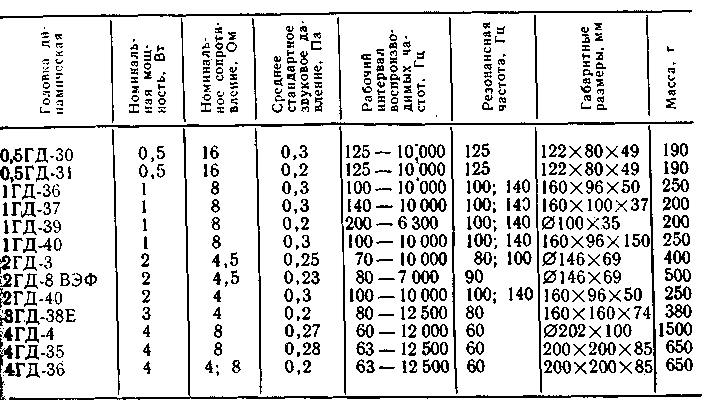
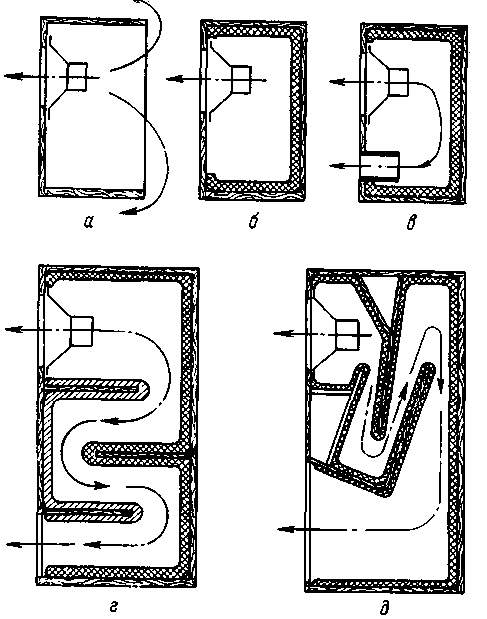
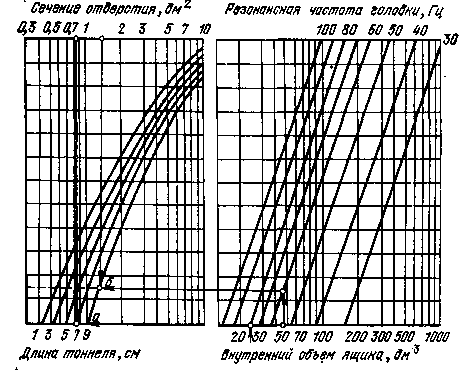
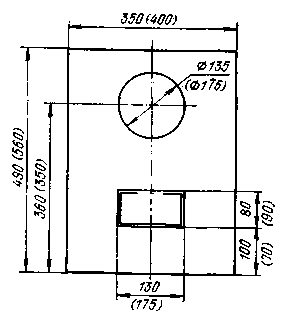
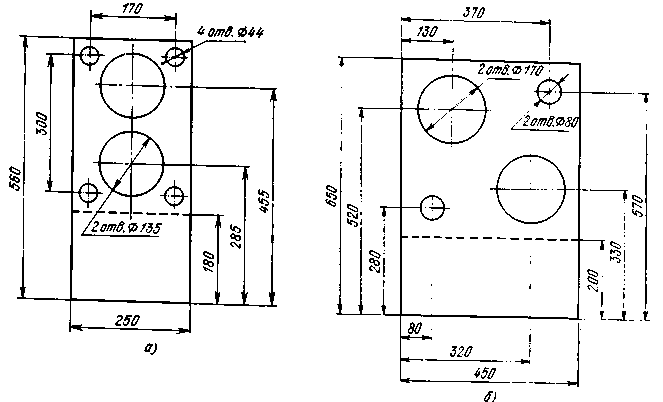
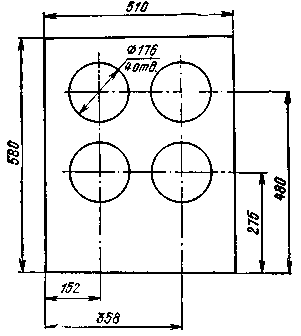
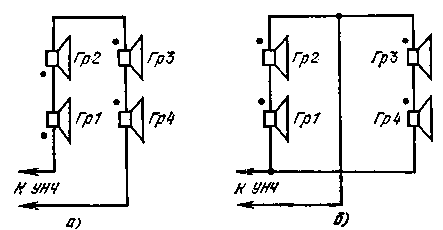
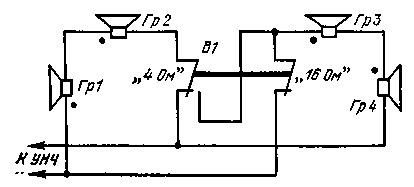
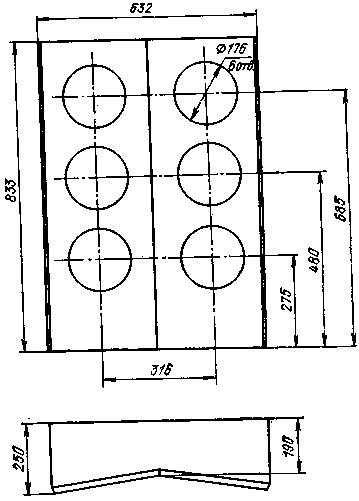
 Leave your comment on this article:
Leave your comment on this article: